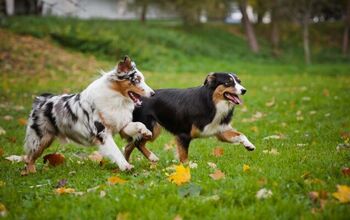What Do I Do If My Dog Eats Wild Mushrooms?
If you hike or adventure with your dog, you have likely encountered wild mushrooms during your travels – especially now that we are entering the autumn season. But here’s the problem: they’re not always safe for our furry friends. As dog parents, it’s our responsibility to learn about the dangers that wild mushrooms may pose to our dogs and how to keep them safe. In this blog post, we’ll discuss everything you need to know about wild mushrooms, including how they could spell trouble for your dog and what you should do if your pup decides to chow down one of these potentially toxic fungi. Recognizing the signs of mushroom toxicity and knowing what steps to act promptly could make all the difference. So, let’s dive into the world of wild mushrooms and get you prepared to protect your canine companion. Can Mushrooms Harm a Dog? There has been a lot of talk recently about the benefits of medicinal mushrooms for both humans and pets. While studies and research are still being conducted to fully understand the impact mushrooms can have as a supplement or alternative treatment option, it’s clear that some fungi can be incredibly helpful. Still, there are also a few that are highly toxic both to us and our furry friends. The challenge when discussing wild mushrooms is that most dog parents aren’t foraging experts with a knowledge of which mushrooms are edible and which are not – and our dogs certainly aren’t educated on the topic! If you are out hiking and your dog discovers a mushroom on the side of the trail, you likely aren’t going to know in advance whether it’s toxic or not. In fact, if you have a high-energy dog like we do with our pup Lucifer, you may not even have the opportunity to see the mushroom enough to identify it before it has been ingested. This means leaving the possibility that it could be a toxic variety up to chance. For this reason, it’s safer to steer clear of wild mushrooms entirely. Does this mean that your grocery store mushrooms are dangerous? No. If you have purchased mushrooms to cook up for dinner and you want to share one with your dog, they are safe. They are healthiest when offered raw, but if you do cook them, ensure they are unseasoned, as the seasoning could upset your dog’s stomach. They can also be found in some foods, treats, supplements, and bone broth products. What Does Mushroom Toxicity Look Like in Dogs? While we have established that allowing your dog to eat wild mushrooms is unsafe, the hard truth is that we can’t always control the situation. Simply looking away for a matter of seconds may be all it takes for your dog to find and grab a mushroom on the side of the road, on a trail, or even in your backyard. For this reason, we must ensure that we are familiar with the signs of mushroom toxicity to recognize the problem and react as quickly as possible. There are four categories of toxic mushrooms: GastrointestinalMushrooms in this category primarily impact your dog’s digestive system. They act quickly, showing signs in as little as 15 minutes after ingestion. These are the most common signs your dog has ingested a gastrointestinal mushroom: Excessive drooling Upset stomach Abdominal pain Vomiting Diarrhea NeurotoxicThese mushrooms cause neurological symptoms and, if not addressed quickly, can often be fatal. Signs often show approximately 30 to 90 minutes after ingestion. The most common signs that your dog has eaten a neurotoxic mushroom include: Digestive upset Weakness Agitation or anxiety Loss of coordination Unsteady gateAppearing confused or disoriented Tremors Seizures HepatotoxicThese mushrooms are significantly more dangerous than the first two categories. They are slower acting, with symptoms appearing as long as 12 hours after eating the mushroom. They begin by upsetting the digestive system and may be initially mistaken for a gastrointestinal mushroom. However, after time, they will start to impact the function of your dog’s liver, leading potentially to liver failure and death if not addressed. Nephrotoxic Finally, this category is very similar to hepatotoxic mushrooms in that it begins as a digestive upset. If unaddressed, these mushrooms can cause kidney failure or acute renal damage. What Do I Do if My Dog Ate a Wild Mushroom? If you notice any of the above symptoms of mushroom toxicity in your dog, contact your veterinarian or the nearest emergency clinic as soon as possible. If there are multiple mushrooms in the area and you can take a sample for identification, it may help provide valuable insight. While no treatment can instantly fix the toxicity, your veterinarian can provide your pup with supportive care. This will begin with inducing vomiting and/or giving your dog activated charcoal to remove or cancel out the poison and prevent further damage. The vet will monitor your dog while providing supportive care to address symptoms or complications of the toxicity, such as IV fluids to prevent dehydration and anti-nausea medications to settle digestive problems. This takes the unnecessary strain off the body, significantly boosting your dog’s chance of survival.












